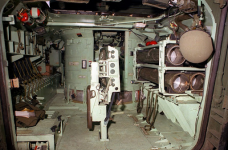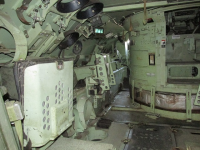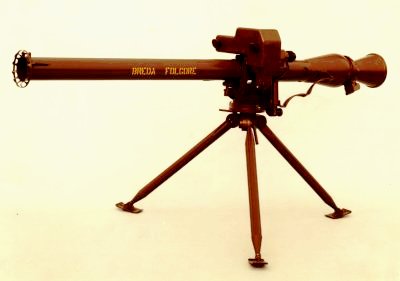I may be demonstrating my age, but a Striker Anti-Tank Battalion can't fight by itself. It would have to cross-group with other units, and be supported by artillery, engineers, etc.
Circa 1963 the Canadian regular infantry consisted of 13 battalions, grouped into six regiments: Canadian Guards, The RCR, PPCLI, R22eR, QOR, and the Black Watch. The Van Doos had three battalions, while the others each fielded two. After extensive study, including a major field exercise to gather data for operational analysis, 3 R22eR was converted to an anti-tank battalion of three companies, each of three mixed 106RR/Entac ATGMs, and one company of SS11ATGMs. The other infantry battalions also retained their 106RR anti-tank platoons. I may be wrong on the SS11B distribution, that that was nearly 60 years ago, and I was a lowly gunner subaltern in 1 RCHA in Gagetown. Anyway, this did not last, although I am not sure how much cap badge politics had to do with it. My main point, is that the anti-tank company in 4 CIBG in Germany was a supporting arm, and, while the commanderv may have advised the brigade commander, I am not sure that advisory role ever left the RCAC, and it would have been really unusual to give the unit an independent mission, witheut or without other troops. In a brigade combat team, the US Army might adopt another course, and they would only do so after lots of thought, trials, and exercises.
I think what you are talking about is exactly what the US, and thus its allies, are all currently wrestling with. Adaptive. Dispersed. Operations.
How adaptive can a small body of troops be? How big an arms locker can they manage? How far apart can they be dispersed? What is their Area of Influence and how does it compare to its Area of Observation? How will it operate? How will it be controlled? Supported? Turned into a cohesive effective force?
As near as I can figure most infantry battalions are fielding about 24 Javelin type ATGMs each. I no longer know if they qualify as medium or heavy, short, medium or long range. And I suspect a lot of other folk are working throw that.
Some armies/units issue Javelins, which have a range of 2500 to 4750m apparently depending on the CLU and how stable the CLU is, at section level (27 per battalion). Some hold them at Platoon, 2-3 per, some at Company, 6 per, and some at Battalion - and some a combination of all of the above. The difference between the TOW and the Javelin is becoming so marginally small that the USMC is ditching TOWs in its Weapons companies for additional Javelins. The Strykers are adding CLUs to their ROWS so as to be able to launch a missile from under armour without having to dismount their sections, who will still have their own CLUs.
The Bradleys with their two TOW launchers and 7 onboard missiles, also carry a pair of CLUs per platoon and 4 to 6 Javelins so a Bradley infantry company of 14 vehicles carries 98 TOWs and up to 18 Javelins for a total of 116 Anti-Tank rounds with 4750m range.
The Israelis are complicating things further their Spike series of missiles.
Their 8 kg Short Range weapon is a 1500m disposable weapon for platoons.
The 14 kg Medium Range weapon has a range of 2500 kg which makes it a direct replacement for the early model Javelin.
The same 14 kg Long Range weapon was also marketed with a longer range of 4000m or that of the later model Javelins
The Long Range weapon has been upgraded to 5500m with a weight of 12.7 kg
There is also the larger 34 kg Extended Range missile with a range of 8000m that is compatible with light vehicles
The Extended Range weapon has also been upgraded to a range of 10,000m.
And finally there is the 70 kg N-LOS Spike with a range of >> 25 km.
And for targeting these things we have 40mm Drone-40s with 10 km ranges that can be launched from an under barrel grenade launcher or by hand.
So the same section that prior to Afghanistan was built around the post-WW2 200m battle now, potentially has the ability to reach out beyond 1000m to 5000m and observe 10,000m. And kill tanks and bunkers.
But, at the same time it is now more vulnerable to being struck from above by those same 40mm drones and airbursting munitions launched from 2000m away by launchers like the CG-84.
I just don't think anybody knows how all this is going to play out.
Sept 1914. What is the effect of Vickers and Maxims and QF 13 and 18 pdrs with airburst shrapnel?
I sense that the aim is to disperse the troops as much as possible while concentrating their fires with effect at the longest possible ranges. But how do you keep them in control. And how do you support them? With Fires. With Beans. With Bullets.
There seems to be an awful lot of upheaval at the moment and an awful lot of experimentation.
And not much for answers.
And somebody is asking what is Force 2025 going to look like.
I'm pretty sure that the answer is going to involve lots of artillery in the form of long range guns, missiles, loitering munitions, UASs and a requirement for GBAD-CRAM systems with EW and Directed Energy capabilities.
I am not sure what it going to mean for heavy forces which take time to mass at a point that may have moved by the time they get there. And what it means for the Engineers if the enemy spends less time on roads and fixed routes.
www.benning.army.mil








